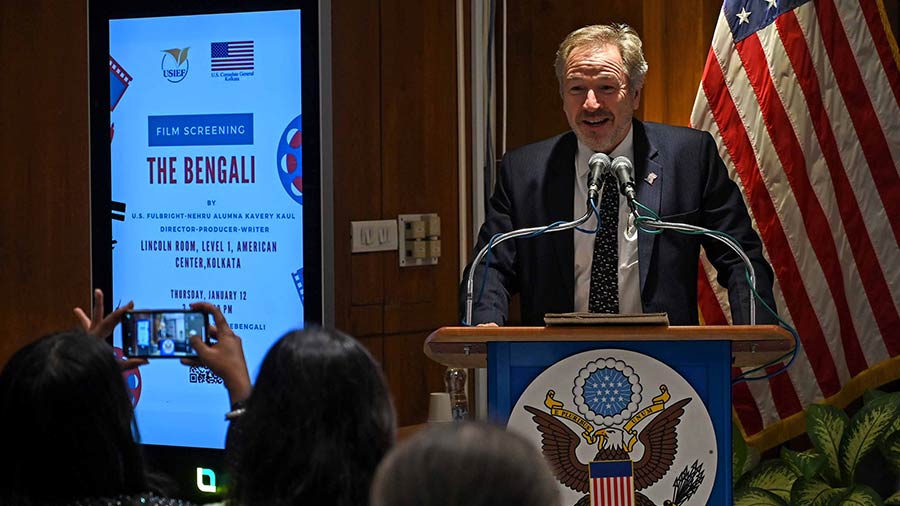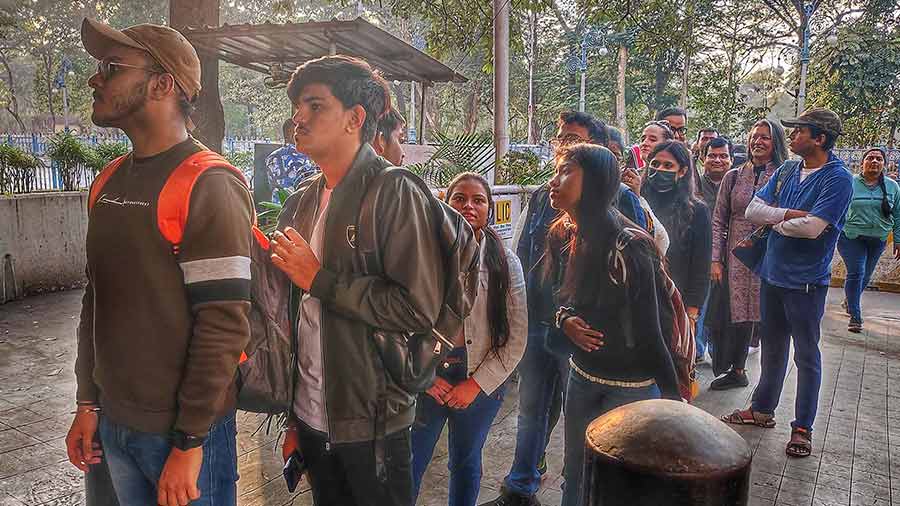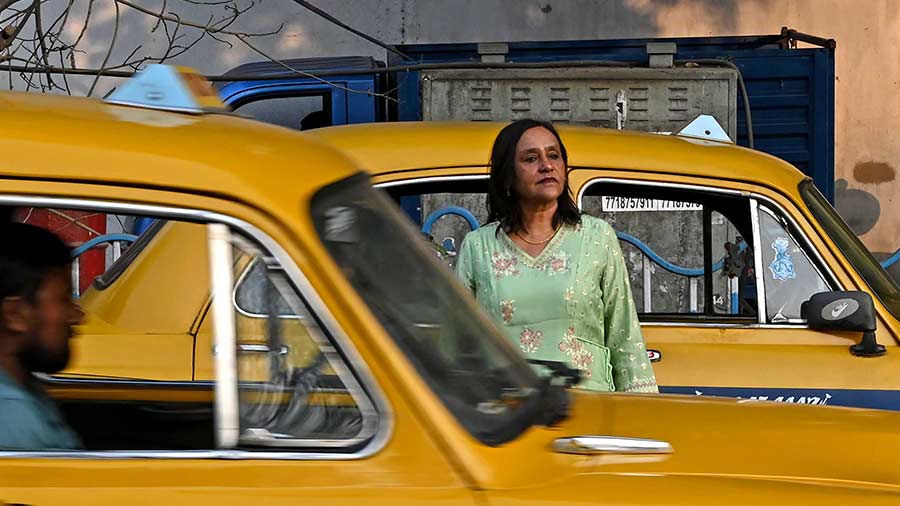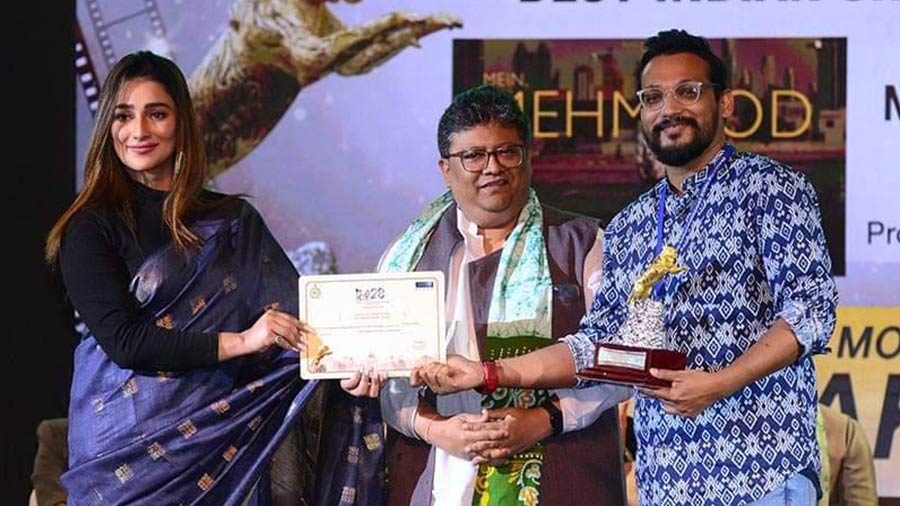Fatima Shaik, a New Orleans-based author who has lived her entire life in the USA, knew that one of her ancestors was from Bengal and always wanted to visit her roots. When she shared her wish with award-winning director, producer, and writer Kavery Kaul, who migrated to the USA from Kolkata when she was six, the two set out on an epic journey to discover the roots of Indians in the USA. After months of investigation, research and hard work, The Bengali was born.
Kaul was in Kolkata on January 12 for the screening of The Bengali at American Center. The film has already been shown at DOC NYC, Telluride, London, Rotterdam, Sydney and other major film festivals.

American Center director and acting consul-general, Adrian Pratt, interacts with the crowd after the film was screened at American Center
My Kolkata caught up with Kaul for a chat about her Kolkata memories, journey as a filmmaker and more. Excerpts…
You left Kolkata when you were a child. What memories do you have of the city?
Lots of them. We used to stay on Ripon Street and life was fun there. I remember a bakery there run by an Anglo-Indian. I remember New Market and Flurys on Park Street. After leaving the city, we would come back to Kolkata and I would barge into the houses of my neighbours. I remembered almost all of them by their names and they would be delighted to see me. Even today, several of my childhood friends are here at the screening.
How did your journey as a filmmaker begin?
As I was studying English at Harvard, I was introduced to the films of Satyajit Ray by a professor. And I was sold. His films took me back to those places in Kolkata I knew deeply. Besides, his works inspired and lured me intellectually and philosophically as well. As I was studying literature, I studied characters and stories and those went into filmmaking.
How did you come up with the idea of The Bengali?
This is probably speculating a long time. My mother had told me we were not the first Indians in America and there were Indians long before the Asian Exclusion Act of 1924 closed the door on us. As a history teacher, she knew that I wouldn’t find anything about them in the usual history textbooks. So, I was aware that ours was a lost history. With my research, I found out that migrants from India would come to the USA and settle in New Orleans. They would marry African-American women because that was the only community that welcomed them. I wanted to find our place in the larger landscape of the USA and I wanted to work on this topic. I kept hoping someone would support my making a film about them. But no luck. I went on to make other documentaries.
Then, by chance, I met Fatima. She is a writer and I am a filmmaker. After a long conversation, she told me her grandfather had come from India and I think she was surprised to find out that he came from Bengal where I’m from. So, I decided to do a film about the journey of Fatima and her family.

Several people queue up at American Center to watch 'The Bengali'
Tell us about your experience of shooting the film.
Well, any shoot is challenging. Our team was a blend of Indian, Indian-American and American crews. It was fun yet hectic.
What were the challenges?
It’s partly an investigative story and finding the village of Fatima was really challenging. The second fold of challenge came when we reached the town. Fatima was trying to find her relatives and ancestral land. So, when land was involved, gaining the trust of the local people was a big challenge. It was mostly the local people who couldn’t understand why somebody like Fatima from the USA would go back to the village in Hooghly if she didn’t have any ulterior motive. At one point the locals believed that Fatima was actually trying to construct a church there. However, with constant interaction and persuasion, they understood our intention. We recently screened the movie in the village as well.
What was their reaction on seeing the film?
They were more than happy to see themselves on the screen. They howled and whistled. In fact, they enjoyed every bit of the film even more than us.
How did you devise the idea of using animation in a documentary?
As I mentioned before, there was not much material available because the history of Indian Americans was lost. So, while making the film, we needed more material and archival footage to tell the story. With this work, I wanted to capture the colours and vibrancy of the New Orleans community. But what I saw in the documentation didn’t attract me. So, because of the under-documentation, we decided to use animation.
Do you have any plans of working in the Bengali film industry?
I am open to working anywhere in the world and would love to work here if I get some interesting projects.
Tell us about your future projects.
Something interesting is coming up, but it is too soon to talk about it.








